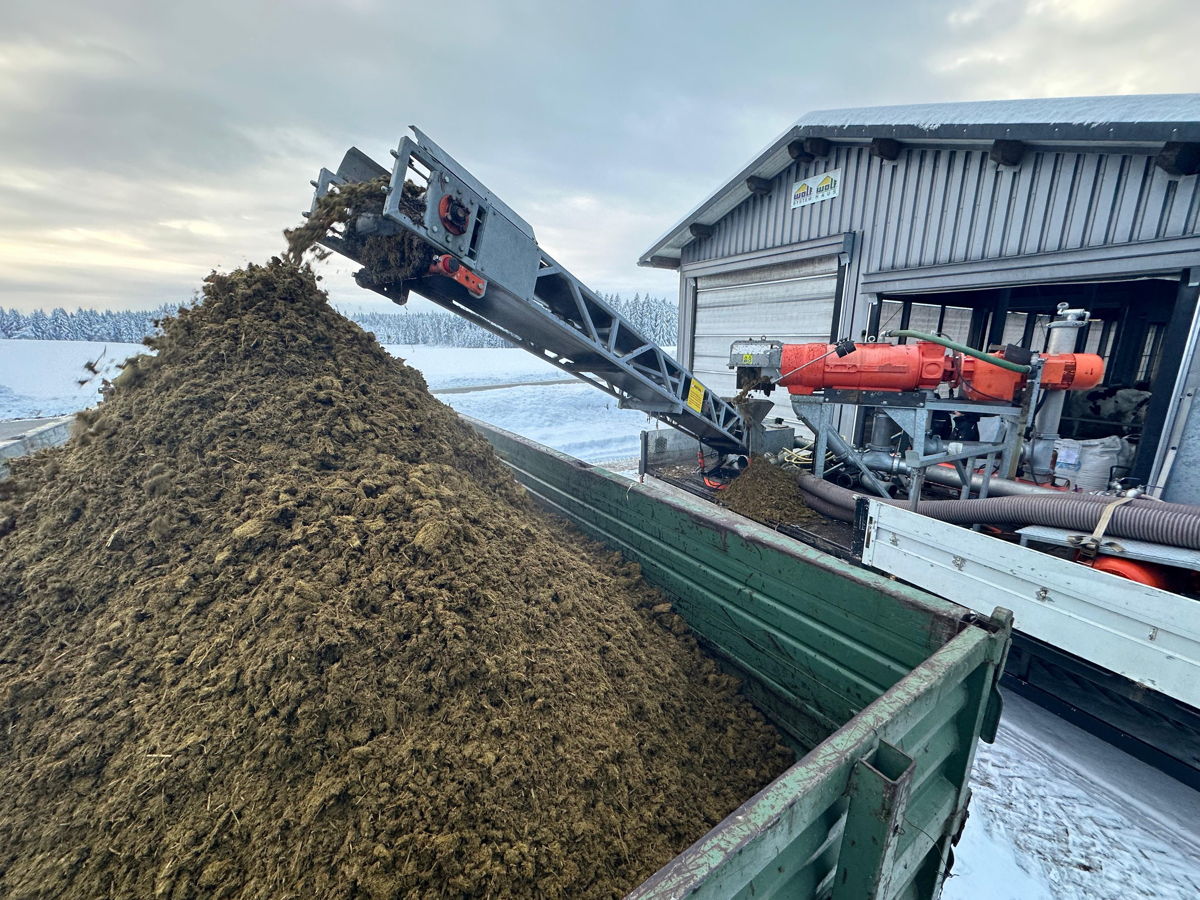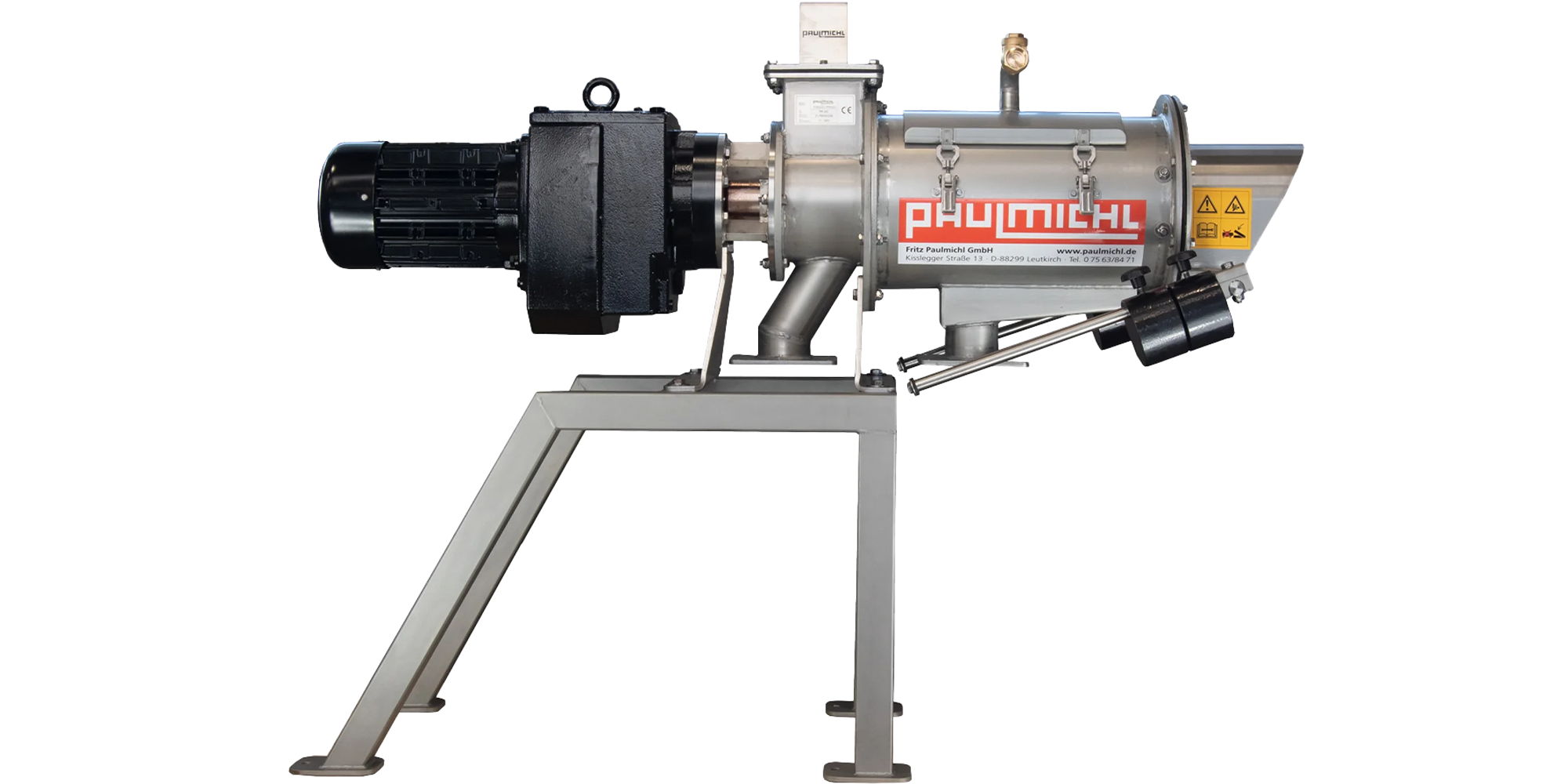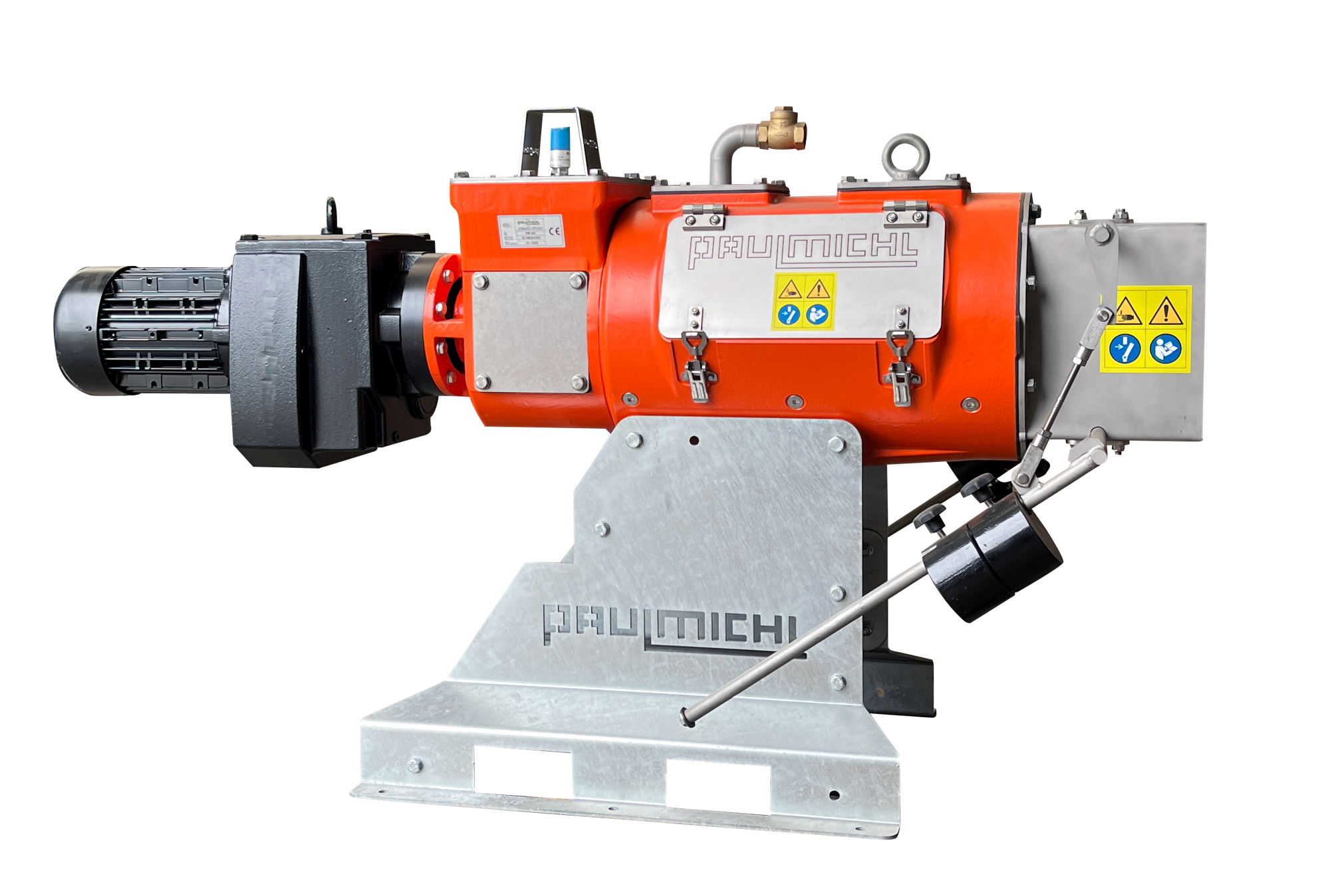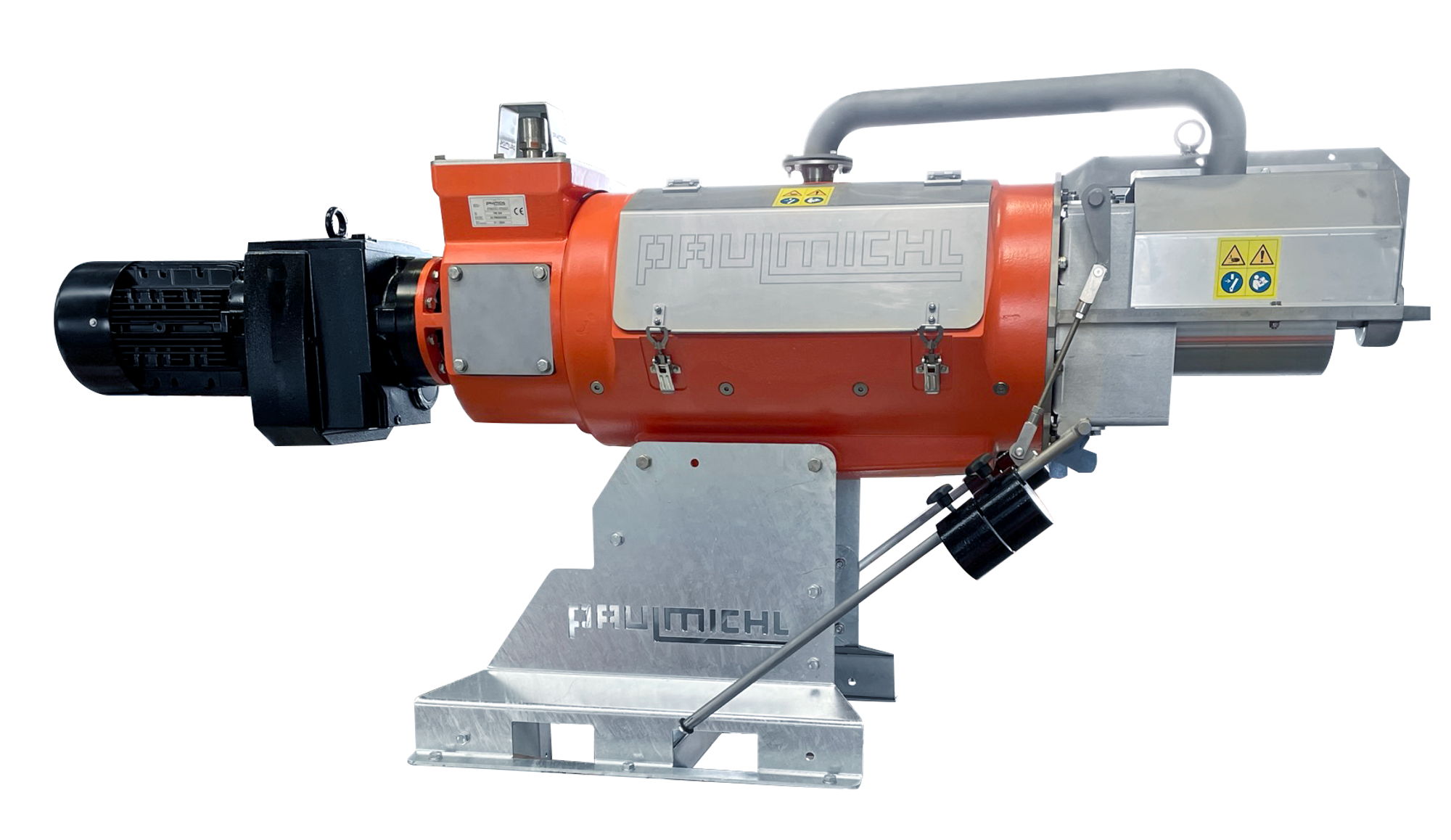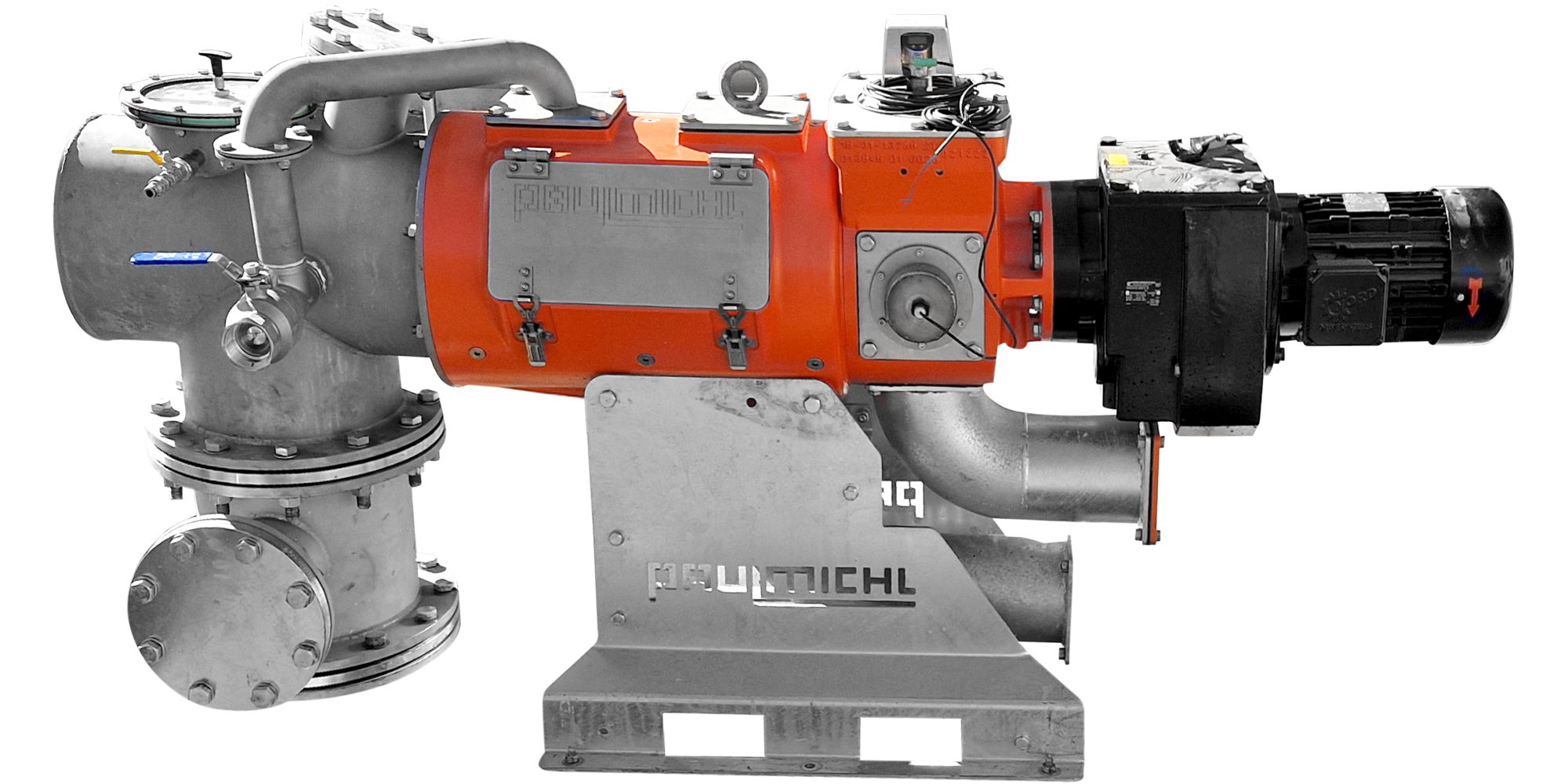- umfangreiche technische Sonderausrüstung
- serienmäßige Pressschnecke mit Gegenlager und speziellem Verschleißschutz
- ideal für Großbetriebe & Lohnunternehmen
- robustes Gussgehäuse
- Durchsatzleistung bis zu 90m³/h (in Abhängigkeit des zu separierenden Mediums)
- TS-Gehalt bis zu 32 %
- Getriebemotor 9,5 / 11 kW
Mobile & Stationäre Separatoren
Jedes Grundmodell (der Pressschneckenseparator PM 200, PM 260, PM 300, PM 300x) kann in verschiedenen Ausführungen aufgebaut und somit ganz an die spezifischen Gegebenheiten angepasst werden. Es gibt die Möglichkeit, den Separator stationär oder als mobile Einheit mit unseren Modellen & Aufbauten zu konfigurieren.
Wieso kompakt?
|
Beschreibung Die Einheit ist auf einem robusten feuerverzinkten Grundgestell aufgebaut und kann mit einem Hebefahrzeug entsprechend positioniert werden. Sämtliche Komponenten sind in das kompakte Grundgestell integriert und garantieren eine sehr gute Zugangsmöglichkeit. Der zuverlässige Separationsbetrieb der Anlage wird durch die vollautomatische Steuer- und Regeleinheit ermöglicht. Mit einem serienmäßig verbauten Frequenzumrichter ist die Beschickung des Separators über eine manuelle individuelle Drehzahlsteuerung sowie über eine Drucksteuerungstechnik möglich. Durch die kompakte Bauweise beträgt die Rüstzeit des Separators nur wenige Minuten. Die Beschickung des Separators erfolgt über eine selbstansaugende Exzenterschneckenpumpe. Die Ableitung des Presswassers erfolgt mittels freien Ablaufs. Optional ist eine Ausstattung mit einer zusätzlichen Presswasserpumpe möglich. Als Sicherheitseinrichtung wird die Pumpe mit einem Unterdruck-, Temperatur- und Leckagesensor ausgerüstet. |
Wieso geteilt?
- Separator und Beschickungspumpe jeweils auf separatem Gestell
- Separator kann auf einer Erhöhung (z. B. Podest, Mauer oder Legostein) positioniert werden - größerer Abwurfplatz
- Abwurf des Feststoffes erfolgt an festem Platz
- Beschickung des Separators kann mit der Pumpe aus verschiedenen Gruben erfolgen
Beschreibung
Aus der Höhe separieren. Die Beschickungspumpe und der Separator sind je eine eigenständige Komponente für sich. Dies hat den Vorteil, dass der Separator auf einer Erhöhung wie z. B. einem Podest montiert werden kann. Der Ansaugweg kann durch die flexibel positionierbare Pumpe so kurz wie möglich gehalten werden. Als Sicherheitseinrichtung wird die Pumpe mit einem Unterdruck-, Temperatur- und Leckagesensor ausgerüstet.
Wieso Hydro?
- gesamte Einheit mittels eines Hebefahrzeugs transportier- und positionierbar
- Abwurfhöhe über 4 m
- direkter Substratabwurf in ein Transportfahrzeug
- Einheit auf einem robusten, feuerverzinkten Grundgestell aufgebaut
- mögliche Varianten: Hydro A oder Hydro F für einfach Transporte mit PKW oder Traktor
Beschreibung
Hinstellen, hochfahren & loslegen. Der Separator Hydro ist ein professionelles Modell für die mobile Separation. Durch die hydraulische Hebevorrichtung am Separator wird ein direktes Separieren vom Substrat in einen hohen Anhänger oder in ein Transportfahrzeug ermöglicht. Dadurch sparst du Geld für teure Aufbauten oder Zeit zur Beladung in einen Anhänger. Zudem bleibt dir die Flexibilität, den Separator an jeder Anlage zu nutzen.
Die Beschickung des Separators erfolgt über eine selbstansaugende Exzenterschneckenpumpe. Dabei kommt die Einheit je nach Modellvariante zu einer Durchsatzleistung von bis zu 85m³/h. Der zuverlässige Separationsbetrieb der Anlage wird durch die vollautomatische Steuer- und Regeleinheit ermöglicht. Mit einem serienmäßig verbauten Frequenzumrichter ist die Beschickung des Separators über eine manuelle individuelle Drehzahlsteuerung sowie über eine Drucksteuerungstechnik möglich. Zur Sicherheit der Pumpe wird diese mit einem Unterdruck-, Temperatur- sowie einer Leckageüberwachungen überwacht. Die Ableitung des Presswassers erfolgt über einen freien Ablauf oder einer Presswasserpumpe.
Variante Hydro A: Eine Variante des Hydro-Separators ist der Hydro-A. Hierbei ist der Separator fest auf einem PKW-Anhänger verbaut und macht den Transport somit noch unkomplizierter. Ohne langes Verladen und Verzurren kann der Separator sofort angehängt und transportiert werden. Dank einem Gesamtgewicht von max. 3,5t, reicht ein Anhängerführerschein der Klasse BE. Mit verschiedenen Aufbaumöglichkeiten können Zuführ- und Presswasserschläuche sowie verschiedene Kupplungen direkt am Fahrgestell befestigt werden und den Betrieb zusätzlich erleichtern. Natürlich hat der Hydro-A eine Straßenzulassung und eignet sich daher ideal auch zur überbetrieblichen Nutzung.
Variante F: Der Hydro-F ist der große Bruder des Hydro-A. Er greift die Vorteile des Hydro-As auf, mit dem Unterschied, dass er auf einem landwirtschaftlichen Fahrgestell verbaut ist und dadurch mit einer Zugmaschine transportiert wird. Einer der Vorteile des Hydro-F ist, dass die Ausklapprichtung in Richtung der Deichsel ist. Dadurch kann er auch auf engem Raum gestellt und betrieben werden. Die Deichsel ist ein- und ausfahrbar und stört somit beim Betrieb nicht. Dies macht den Separator noch flexibler einsetzbar. Da das Gewicht hier nicht auf 3,5t begrenzt ist, kann der Anhänger mit noch mehr Zubehör ausgestattet werden. Mit verschiedenen Aufbaumöglichkeiten, können Zuführ- und Presswasserschläuche sowie verschiedene Kupplungen direkt am Fahrgestell befestigt werden und den Betrieb zusätzlich erleichtern.
Wieso Förderband?
- schwenkbares Förderband
- alle Komponenten auf einem robusten, feuerverzinkten Grundgestell
- schneller Aufbau & Einsatz
- Feststoffabwurf direkt auf einen Anhänger
Beschreibung
Mobil. Einfach. Schnell. Die mobile Separationseinheit kann sicher auf einem PKW-Anhänger transportiert und positioniert werden. Innerhalb von nur fünf Minuten ist sie einsatzbereit. Für die Beschickung des Separators sorgt eine selbstansaugende Exzenterschneckenpumpe. Die weitere Pumpe fördert das Presswasser zuverlässig und automatisch zu dem gewünschten Behälter. Die Förderbandlänge beträgt 6 Meter.
Wieso LKW-Aufbauten?
- Einheit fest auf Fahrzeug verbaut
- sehr hohe Durchsatzleitungen möglich (>100 m3/h)
- individuelle Lösung für jeweiligem Anhänger inkl. vollautomatischer Steuerungstechnik
- Feststoffabwurf mittels Förderband/-schnecke
Beschreibung
Auch für spezielle Gegebenheiten oder Anforderungen finden wir für eine individuelle Lösung. Beschreib uns, was du wo brauchst und wir entwickeln den passenden Separator für dich.




